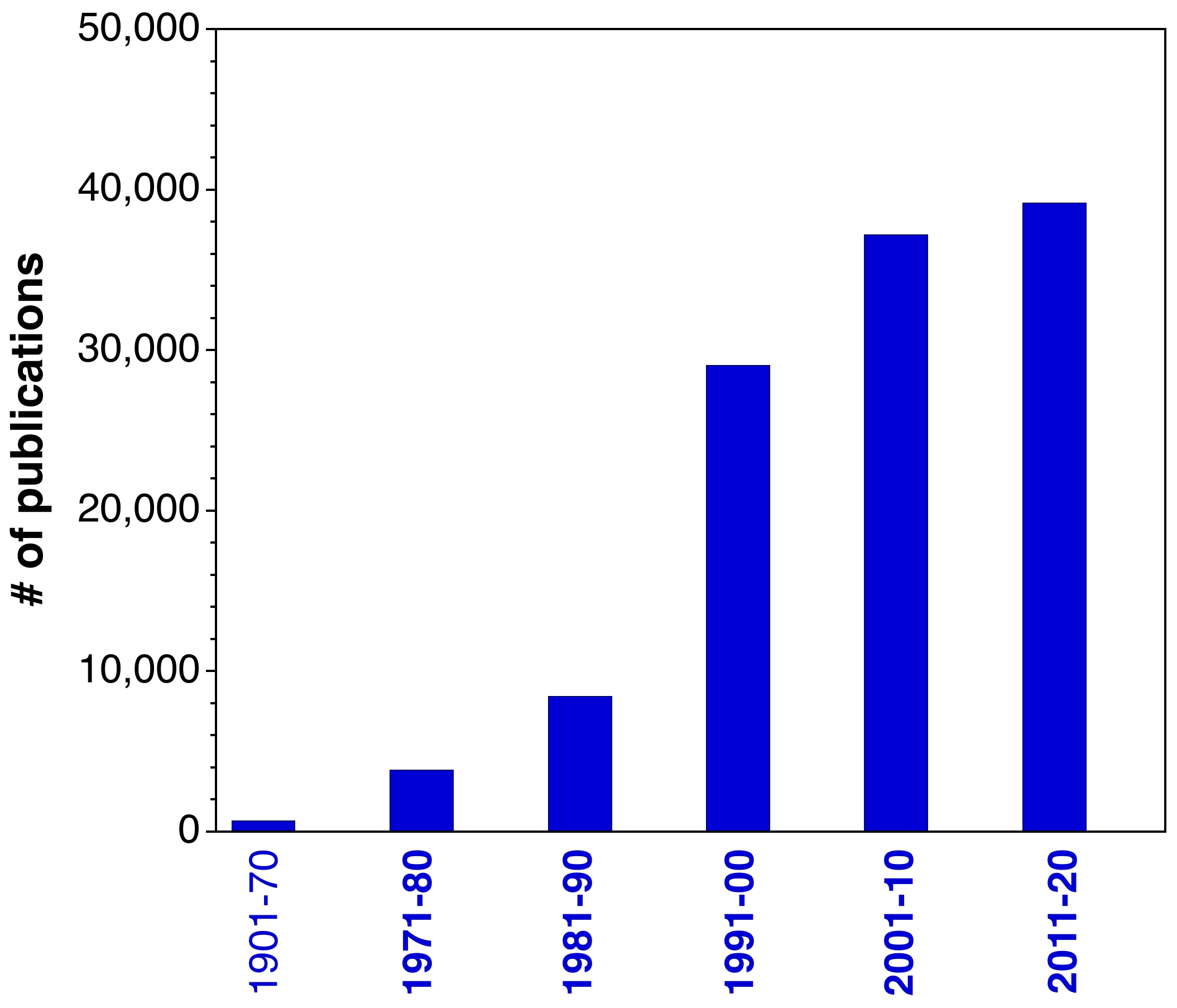Despite intense lobbying by science policy advocates (ex. U15, Universities Canada, the Canadian Science Policy Centre) and the publication of reports, such as the Advisory Panel on the Federal Research Support System chaired by Frédéric Bouchard, the 2023 federal budget contained no new investment in the base budgets of the three Canadian research granting councils to support fundamental, discovery-based research.
We have reached a critical juncture where the federal government must make fundamental research a national priority and fund it at a level that will allow us to compete internationally and retain our most talented researchers. But the research community cannot leave it to advocacy groups to do all the heavy lifting; at the risk of mixing my metaphors here, we must step up to the plate!
Much has been written about this situation, including excellent articles by Paul Wells and Paul Basken, decrying how Canada is falling behind in its support of research and innovation globally. According to the Organization for Economic Cooperation and Development, Canada’s investment in research and development in 2020 amounted to 1.8 per cent of its GDP – significantly less than the 2.7 per cent average for OECD members – and it has stagnated at that level for the past 20 years. By contrast, the United States’ investment in R&D grew from 2.6 per cent of GDP in 2000 to 3.4 per cent in 2020; over that same period, South Korea’s investment grew from 2.1 per cent to 4.8 per cent of their GDP! Reflecting on the neglect of fundamental research in the 2023 federal budget, Paul Davidson, former president of Universities Canada, was quoted in Mr. Basken’s article as saying, “Right now, the [federal] government is eating its own seed corn.”
This stagnation is reflected in funding programs that support fundamental research across all disciplines. For example, the average value of an NSERC Discovery grant, adjusted for inflation, has not changed in the past 15 years; more egregiously, the value of Tri-Council scholarships and fellowships, not adjusted for inflation, has not changed in the past 20 years. Echoing the 2017 report of the advisory panel on federal support for fundamental science chaired by David Naylor, the 2023 Bouchard report states that it is “critically important that core funding of the granting councils be significantly increased to address (1) the pressures resulting from the growth in the system (e.g., increasing number of graduate students and postdoctoral fellows); (2) the effect of inflation; and (3) the importance of nurturing a globally competitive research and talent base.” In fairness, the 2023 budget document does state that “the government is carefully considering the advisory panel’s advice, with more detail to follow in the coming months on further efforts to modernize the [research support] system.” Notwithstanding the foregoing, it is incumbent on the Canadian research community to keep the pressure on the federal government to resolve the current underfunding of fundamental research across all scholarly disciplines.
But how can we do this? How can we start moving the needle in a meaningful way? Canadian universities, through the efforts of their senior leadership and those of advocacy groups like the U15 and Universities Canada, have lobbied the federal government with varying degrees of success for many years. Some of our distinguished colleagues have written opinion articles on the critical importance of fundamental research to the advancement of society and as the training ground for the next generation of researchers. More recently, grassroots organizations like Support Our Science have focused their advocacy on improving financial support for graduate students and postdoctoral scholars in Canada. But many of our players are sitting on the sideline. I believe it is incumbent on all researchers, especially those who receive Tri-Council funding, to educate the Canadian population (i.e., those who fund our activities through their tax dollars) on the importance of what we do.
We are teachers, so it should come naturally to us to reach out to members of our community and articulate a compelling value proposition for fundamental research that will raise their awareness and appreciation of what we do, and thus increase our leverage and political capital in advocating for greater research investments by our government. In the framework of case studies, we can explain how discoveries made in our respective fields changed our understanding of natural, physical, and social phenomena and, in many cases, impacted how we think, live and work. All of us can do this, whether on the scale of a family gathering, a public library presentation, an opinion article or, like my colleague Donna Strickland, as part of outreach activities related to a significant award and/or recognition.
In the second half of this article, I would like to show how I intend to “step up to the plate” and advocate for the importance of fundamental research with the story of a serendipitous discovery that changed how we communicate, work and play. A discovery that took place more than 130 years ago but that did not result in a commercial product until the 1970s – one that proved to be foundational to my research career – the discovery of liquid crystals.
Chance favours the prepared mind
Fundamental research generally focuses on advancing knowledge rather than solving a specific problem. Today, fundamental research occurs almost entirely in universities instead of industrial or government labs. It is a long-term proposition – researchers may spend decades seeking a better understanding of a particular field of enquiry.
Let us go back to the mid-19th century, more precisely Dec. 7, 1854, when Louis Pasteur gave a lecture at l’Université de Lille and famously said: “dans les champs de l’observation, le hasard ne favorise que les esprits préparés” which translates to English as “in the fields of observation, chance favors the prepared mind.” His statement underscored the fact that many transformational discoveries that shaped modern society then and now resulted from scientists carrying out fundamental research. Because it is often slow and incremental, so-called “eureka moments” can be few and far between. Of course, fundamental research does aim at addressing practical problems, but in a steadier approach that is not driven by deadlines or milestones. However, every so often, someone makes an observation or obtains a result that proves to be game-changing. Throughout the history of science, such discoveries have often been serendipitous – finding something good without looking for it – and the ability to recognize their value required what Pasteur referred to as having a “prepared mind.” The discovery of liquid crystals is one such serendipitous event, but its impact took decades of fundamental research to be realized.
The discovery of liquid crystals
You may recognize the term liquid crystal in modern display technologies, from wristwatches and smartphones to laptop computers and flat panel televisions; it is what LC stands for in the acronym LCD. But what is a liquid crystal? As the term implies, it is a fluid with some of the characteristics of crystalline materials. Liquid crystals are birefringent – they rotate the plane of polarized light that travels through it; this unique property forms the basis of LCD technology. Given that the first commercial LCD devices emerged in the 1970s, you might think liquid crystals were discovered in the 1950s or 1960s – well, think again.
Liquid crystals were discovered in 1888 by the Austrian botanist Friedrich Reinitzer and the German crystallographer Otto Lehmann. Dr. Reinitzer’s objective was to investigate the molecular structure of cholesterol, which he thought was a component of carrot roots. Before the advent of modern spectroscopic and X-ray crystallographic techniques, 19th-century scientists determined molecular structures by making a predictable structural change in a given compound – making a derivative – and looking at the resulting changes in its physical properties. Hence, Dr. Reitnizer converted cholesterol into an ester of benzoic acid: cholesteryl benzoate, which is a white solid. Intending to record a melting point, Dr. Reinitzer heated this new material, reaching 146 °C when the solid began to melt. But instead of melting into a clear liquid, it melted into a ‘cloudy’ liquid that persisted upon further heating to 178 °C when it finally turned into the expected clear liquid. No matter how often Dr. Reinitzer purified the material, the melting point experiment gave the same unexpected result.

An “unprepared” scientist might have discarded this result as unsatisfactory and moved on to make a different derivative of cholesterol that behaved normally. Thankfully, Dr. Reinitzer had a prepared mind; he asked the question: what is this cloudy liquid? To help answer this question, Dr. Reinitzer turned to Dr. Lehmann, who had a microscope fitted with crossed polarized filters and a heating stage; with such a customized instrument, a birefringent crystal was observable until it melted to a liquid, at which point the field of observation normally turned dark because a regular liquid is not birefringent.

Hence, Dr. Lehmann placed a small amount of cholesteryl benzoate on the stage of his polarizing microscope and began heating the sample. Upon reaching 146 °C, the solid material began to melt and flow, as expected from a liquid. However, it could still be seen, albeit with a less colorful texture – a liquid with the birefringence of a crystalline material – a liquid crystal! Lo and behold, when the sample reached the temperature of 178 °C, the birefringent liquid turned into a regular liquid, and the field of vision turned dark. Although initially viewed with skepticism, Drs. Reinitzer and Lehmann’s discovery became widely recognized, leading to decades of fundamental research aimed at understanding this new state of matter.
From serendipity to LCD technology
In the late 1920s, the Russian physicist Vsevolod Freedericksz showed that if a liquid crystal film between conducting glass plates is placed between crossed polarized filters, one could create a reversible light shutter – like in a pre-digital photo camera – by turning an applied electric field ON and OFF. That is because the ability of a liquid crystal film to rotate plane-polarized light depends on the orientation of molecules relative to the crossed polarizers – the liquid crystal film is birefringent in the OFF state when the molecules lie in the plane of the glass due to surface forces; it is not birefringent in the ON state when the molecules align with the electric field and ‘stand up’ relative to the plane of the glass.

Incredibly, the potential applicability of the so-called “Freedericksz transition” would not be realized until the early 1970’s when two critical developments took place. One was the ‘twisted nematic’ liquid crystal display (TN-LCD), which was developed independently by two groups, one led by James Fergason at Kent State University in the United States and the other led by Martin Schadt and Wolfgang Helfrich at Hoffmann-Laroche in Switzerland. The other development was the discovery of a new class of liquid crystals by the chemist George Gray at the University of Hull in the U.K. These cyanobiphenyls (e.g., 4-cyano-4’-pentylbiphenyl, 5CB) were thermally, chemically, photochemically, and electrochemically stable, and as mixtures of varying alkyl chain lengths, they were liquid crystalline under ambient conditions over a broad range of temperature. The TN-LCD using cyanobiphenyl mixtures would be used in the first commercial LCD applications: digital watches and calculators. It marked a defining milestone that led to an explosion in research activities in both academia and industry, which is reflected in the number of peer-reviewed publications on liquid crystals, from a total of ca. 700 in the first seven decades of the 20th century to more than 115,000 between 1971 and 2020.

Fast forward to today, after quantum leaps achieved in engineering, chemistry, and physics that have led to modern LCDs, it is hard to fathom how far we have come unless you have worked in the field and appreciate its history. We went from primitive monochrome numerical displays – some of which are still used in gasoline pumps, for example – to full-color LCDs with ultra-fast response times, and from a few dozen pixels to over 8 million pixels in large 4K high-definition flat-panel televisions.
But let us reflect for a moment and ask the question: would we have such technology today if Friedrich Reinitzer had not had a prepared mind and wondered what was that cloudy liquid? Scholars who perform fundamental research ask these questions all the time. Answering these questions helps us advance our knowledge and provide a framework for the training of students, the next generation of researchers. And every so often, the answer to one of these questions becomes a “seed corn” that leads to a new field of enquiry and new advances heretofore unimaginable. But right now, at this particular juncture, if we do not step up to the plate and do our part in advocating for more sustained funding for fundamental research, we will run out of seed corn.

I very much enjoyed reading Bob Lemieux’s articulate and engaging article. I agree that we all have to step up to the plate to support a significant increase in funding for fundamental research in Canada. However, the economic value and lack of support of fundamental research is matched by the value of applied science and similar failure to support applied science. Applied science is the last half of the journey. Without robust support for applied science, there can be no realization of the benefits of fundamental research.
Discoveries in basic psychology, including development in learning, cognitive and emotional development have spawned interventions that we and others have brought to the clinic and resulted in measurements and interventions that have enabled infants, children, youth and adults to overcome major difficulties and flourish as contributing members of society.
In some fields, there may be sufficient commercial support for applied science, but in many other fields, such as public health, health systems research and my own field, clinical psychology, there is usually no opportunity for commercial support. Like fundamental research, most applied research in Canada has been starved.
An exclusive focus on increasing funding for fundamental science is foolish as it pits scientists against each other, robs efforts to lobby for change of valuable allies, and fails to recognize that publicly supported, applied science is critical for the well-being of Canada.
Very good pitch (to stay within the metaphor) – we need to step up. The state of affairs of science funding is, as you note, precarious but it’s important to understand why we have failed to maintain investments. This is multi-faceted, like your crystals, and includes poor messaging by the community (hey, it didn’t work last time, let’s do the same thing again), failure to convey the real benefits (to be fair, we’ve tried a bunch of things, HQP, middle class jobs, etc), and our remonstrations are being interpreted as crying wolf, or worse. I don’t think comparing ourselves to peer nations works either, because there are measurement issues, even though it’s embarrassing to look at, for example, NSERC Discovery grant levels. Rather, we need to be far more tangible and realistic in our case for support. We need carefully calculated and reasonable deliverables. We need to accept changes to the status quo and make priorities. That will be painful but just asking for a lot more is clearly not working. And we need to spark imagination. Basic science is about new knowledge. It is requisite for everything else. Tooting our horns is needed but far more effective is arousing the public’s interest beyond what they see on TV (which is precious little). Onwards!